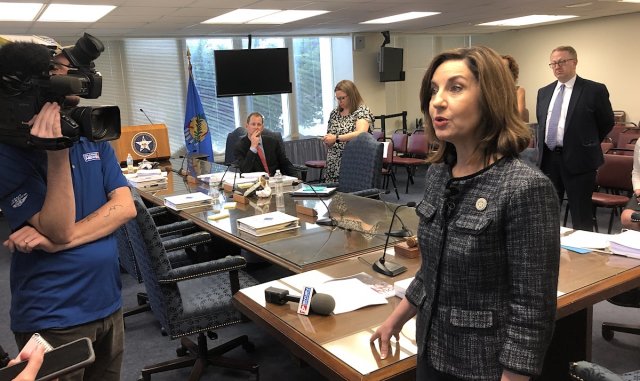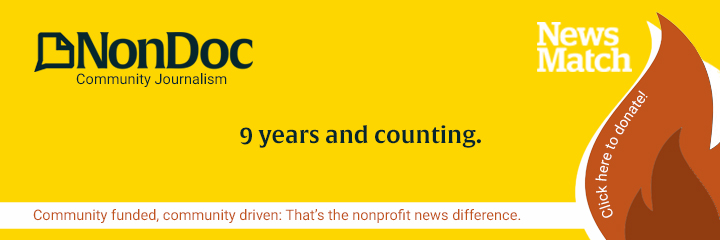

Earlier this month, I met with three administrators at the Oklahoma State Department of Education who have been wrestling with accountability issues for virtual and blended schools, especially for-profit charters like Epic Charter Schools.
As spokesperson Steffie Corcoran told me, devising oversight systems for these schools is complex because “there is a physical world and a virtual world.”
The OSDE has earned a reputation for professionalism, but changes in education models are outpacing legislation and policy. In terms of monitoring a rapidly emerging landscape of online instruction, Deputy Superintendent Monty Guthrie said, “We’re riding a donkey into the space age.”
Oklahoma’s approach to public school oversight has long stressed local control by the districts’ governing boards. There has often been a tension between the desire for school choice and flexibility and the need for regulations to protect students and taxpayers. Any attempt to hold schools like Epic more accountable in the future would have to acknowledge that history.
The dubious nature of attendance metrics
As bizarre as it sounds, the U.S. has rushed down the path toward online instruction without conducting adequate research or thoroughly contemplating the downsides of virtual schooling. Believe it or not, Oklahoma is more engaged than most states in discussions over virtual school accountability.
One of the most complicated questions involves how to define and implement attendance policies. Blended schools combine classroom settings with digital instruction, and the ones run by traditional school districts take attendance and can be held accountable to the same rules as brick and mortar schools. (They could also adopt statewide virtual school policies, if they chose.)
But the required attendance metric for statewide virtual schools was based on the completion of 40 assignments per quarter. The attendance figure reported in the Oklahoma Report Card was based on chronic absenteeism recorded by the virtual school.
As a result, I argue that the 99 percent “in good attendance” score for Epic demonstrates the dubious nature of many current accountability metrics for online schools.
I would add that the difficulties with creating accountability for academic standards and teacher quality in online schools are just as daunting. It might or might not be possible to devise a valid oversight system for for-profit virtual charters, but in this age of market-driven school reform, Oklahoma funded Epic with $112 million dollars last year.
Blended learning requires accountability, too
State oversight for online charters is assigned to the Oklahoma Statewide Virtual Charter School Board. Regardless of who is in charge of oversight, I believe, the dangers involved in rapidly expanding virtual and blended charters without devising some valid accountability for attendance and instruction should be obvious. How in the world could we have funded a for-profit system without devising a way to tell whether students were actually engaging with a curriculum and with flesh-and-blood educators?
Another new challenge was explained to me. When it came to charter oversight, states have concentrated on the schools’ performance. Now equal attention should be devoted to virtuals’ governance.
In contrast to established procedures that traditional school boards follow, there has been nothing comparable for sponsors of for-profit schools. As we were talking, however, the Virtual Charter Board cited recent legislation in denying the application for Dove Academy Charter School’s virtual school. (I would add that Dove’s brick and mortar schools post impressive test scores, but its sponsor has a history of questionable practices.)
Some students benefit from schools like Epic, but a growing body of cognitive science indicates that an overuse of online instruction is likely to remain inherently damaging for many or most students. In theory, blended learning should be more effective, but a comprehensive seven-year analysis by the National Education Policy Center shows that blended learning has failed almost as much as virtual schooling. However, blended learning offered by traditional brick and mortar school systems has produced better outcomes, and it is easier to hold such systems accountable.
Coincidentally, the Cooperative Council for Oklahoma School Administration (CCOSA) seemed to be on the same page when it announced its recommendations for a “Blended Learning Framework.” Drawing on NEPC research, the framework calls for:
- Highly qualified teachers certified in the courses taught, driving the instruction;
- The schools to provide virtual courses that supplement in-person learning once the school — working in cooperation with parents — identifies the options that are educationally appropriate and best fit each student’s needs;
- The schools to provide equity to ensure students have a “place” where they have opportunities for extracurricular activities, access to transportation, nutrition and counseling services, along with immediate remediation as soon as the teacher identifies that a student is struggling;
- Transparency on financial and data reporting.
Research problems complicate virtual learning
Although CCOSA was not as blunt as the NEPC, it is reassuring to see how it, as well as the SDE and the Virtual Board of Education, have heeded the advice of social scientists, as opposed to the spin of Epic advocates like the Oklahoma Council for Public Affairs and the soundbites they receive from the American Legislative Exchange Council.
The key NEPC finding was stated succinctly by Michael K. Barbour, who found the “lack of research [on virtual or blended student experience] extends throughout the field of virtual and blended education — and much of this research is atheoretical, methodologically questionable, contextually limited, and over generalized.”
Barber concluded:
The body of evidence is overwhelming in its critical conclusion that virtual schools are performing terribly with no signs of improvement. Aside from self-reported or self-funded evidence, the blended learning schools are only performing slightly better than the full-time virtual schools.
Online learning is not going away, nor should it. To minimize the harm that can be done in the virtual world, we should thoughtfully build on what has worked in brick and mortar schools while ensuring meaningful oversight.





















